‘Ezekiel Papyrus’, a biblical document of great value, exhibited in Spain’s national library
The National Library of Spain opens a new exhibition explaining the importance of the manuscript, written in Greek possibly in the 3rd century.
Protestante Digital · MADRID · 14 MAY 2025 · 16:57 CET
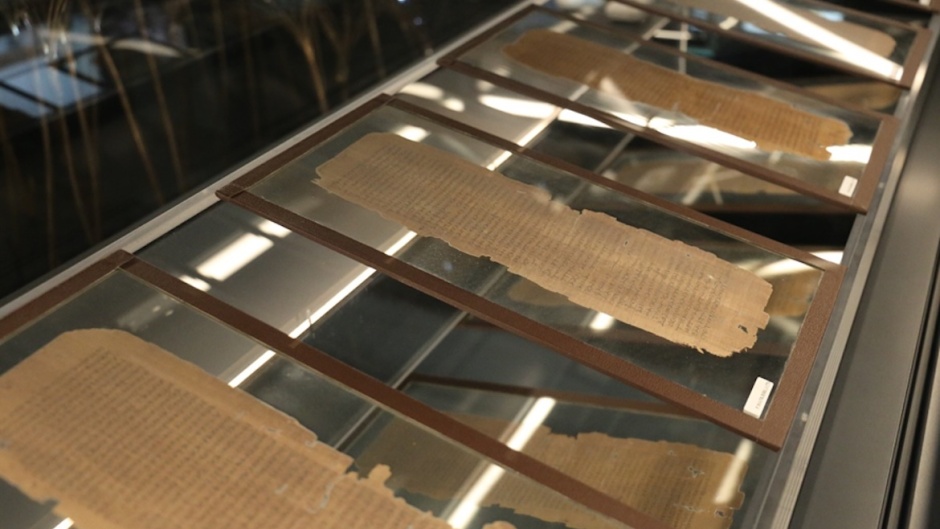
The National lLibrary of Spain is presenting its oldest preserved document, the Ezekiel Papyrus or Codex P967, to the public in a free exhibition that will be on display at its headquarters in Madrid until 1 November 2025.
The exhibition The Ezekiel Papyrus. The Story of Codex P967 presents the ten pages of the original papyrus, written on both sides, which the Spain’s national library has held and conserved since 1983.
The first five pages will be on display for the first three months, and the following pages thereafter.
Probably dated to the 3rd century AD, the original manuscript of the Ezekiel Papyrus had a total of 236 pages, containing the biblical text of Ezekiel, Daniel (with Bel and Susanna) and Esther in its Greek translation, in a version very close to the ancient Septuagint or the Seventy translation.
The name P967 refers to the number assigned to it in the official list of Greek manuscripts of the Old Testament.
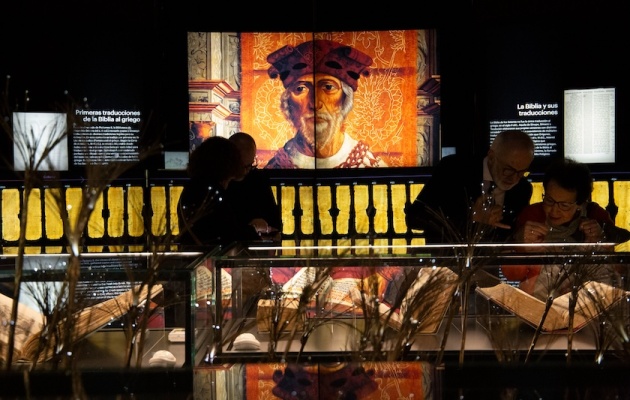
The exhibition has been made possible thanks to the collaboration of the Pastor Foundation for Classical Studies, owner of the manuscript on display, and the Friends of the National Library of Spain Foundation (FABNE).
A unique recreation of a unique codex
Discovered in the Mir necropolis (Egypt) in the late 19th or early 20th century, the Ezekiel Papyrus underwent an extraordinary journey.
It was sold in pieces on the antiquities market between the 1930s and the late 1950s and ended up scattered across various collections around the world.
Now, the 200 surviving pages of the original are brought together virtually and given new life through technology.
It is a fascinating historical journey and a prime testimony to the cultural transformations of antiquity and its crucial role in the development of European culture.
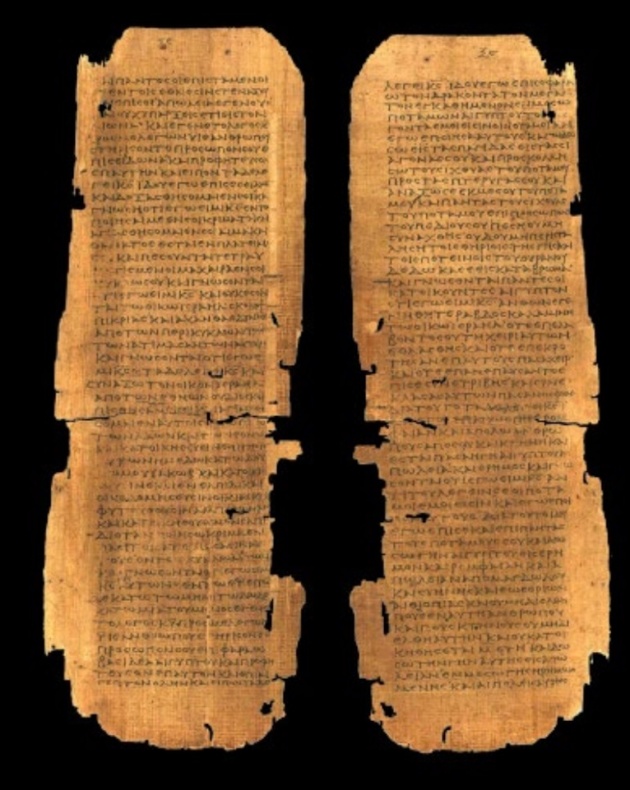
High-quality images of parts of the Ezekiel Papyrus held at the Chester Beatty Library in Dublin, Princeton University, the University of Cologne, and the Monastery of Montserrat in Barcelona have been obtained and will be displayed together in a circular tour, which tells the complete story of the original codex.
Alongside this visual immersion, which allows visitors to glimpse the codex amid original papyrus plants made with lights, five display cases bring us closer to history with a variety of documents from the collections of the Spain’s national library.
These include replicas of writing tools used in Roman times, manuscript Bibles in Greek and Hebrew, the Complutensian Polyglot Bible and prints of Ezekiel made from works by Michelangelo and Raphael.
The ethical preservation of cultural heritage
For the curators of the exhibition, the papyrologists and hellenists Raquel Martín Hernández, professor of Classical Philology at the Complutense University of Madrid, and Sofía Torallas Tovar, research professor at the Institute for Advanced Study (Princeton), “the singularity of the Ezekiel Papyrus lies not only in its enormous historical and archaeological value, but also in the fascinating history surrounding its discovery, dispersion and conservation”.
“Addressing this story was one of the exhibition's core objectives from the beginning”, they added.
The exhibition aims to “invite the public to learn more about this valuable manuscript preserved along with so many other jewels of written heritage, appreciate the work of those early translations of the sacred text into Greek and the beauty of these ancient and rare copies”.
It also seeks to “to raise awareness of the historical and cultural richness of the manuscript, as well as to promote a critical and necessary reflection on the ethical preservation of cultural heritage and our responsibility in its care and study”.
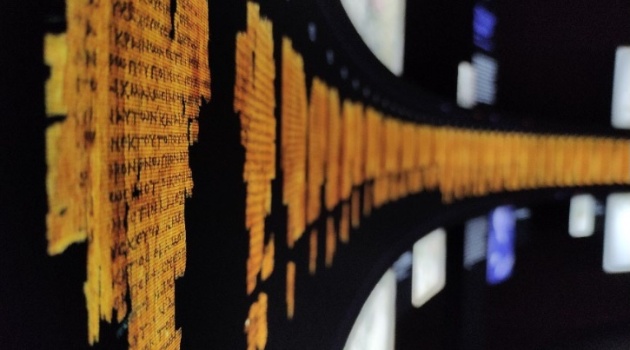
“While we can never have the complete manuscript in physical form again, new technologies help us to make our dream a little bit real”, they said.
This dream was made possible thanks to the exhibition design by Rocamora Design and Architecture, which has captured the essence of the project and endowed it with beauty, to create a space that surprises and captivates visitors.
As Ángel Rocamora explained, he imagined "a place where one could not only observe a story, but also dwell in it; a place where visitors could enter the Bible, walk through it, and move through its pages as if they were walking inside the text”.
The story of Ezekiel is presented in an immersive, contemporary and emotional way, connecting us with history and taking us to the Nile, to Egypt and to the heart of the Old Testament.
It is a living, beating heart of golden papyrus, which breathes history, light and mystery in the geometric centre of the National Library, guarding exceptional documents.
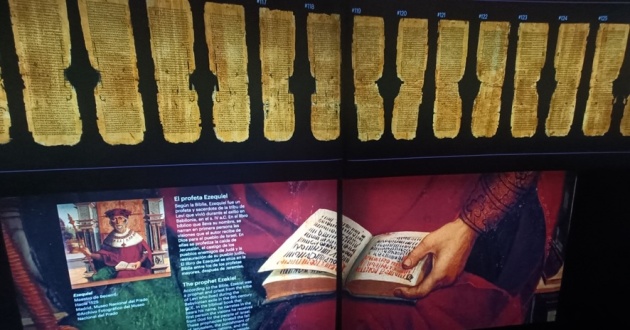
An exhibition that goes beyond
The Ezekiel Papyrus. The history of Codex P967 exhibition does not end in the antechamber of the María Moliner Reading Room at the national library of Spain.
The work will remain in the exhibition catalogue, which is already available, and will be completed with the creation of a digital facsimile. This will be stored in a digital repository, ensuring that the document survives this temporary exhibition and remains available for scholars and curious people to enjoy.
Join us to make EF sustainable
Learn all about our #TogetherInThisMission initiative here (English).
Published in: Evangelical Focus - culture - ‘Ezekiel Papyrus’, a biblical document of great value, exhibited in Spain’s national library
